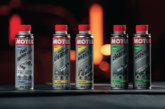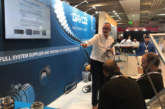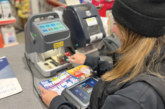Ashley Evans, from CSD Associates, draws on his extensive knowledge of builders merchant branch layout to explain how motor factors can make the most of the space and display room available to them. Simply by exhibiting a full range of products the right way, factors can push customers towards distress purchases, keeping business flowing and sales ticking over.
I started my commercial life in retail DIY marketing and applied this experience when setting up a consultancy business focused on display, merchandising and storage, in the first instance for DIY retailers and ‘the Sheds’ like B&Q. Our work on
developing the B&Q warehouse concept caused builders merchants to call on our services to help them get a share of the ‘DIY Pound’.
Traditionally, builders merchants were a warehouse operation with a small ‘box’ in one corner forming an office and trade counter. In front of the counter was a small space for collection customers to hang about whilst they waited to be served. The counter was a bit like the ‘Berlin wall’ keeping the thieving so-and-so’s away from the valuable stock. So the early application of self-selection consisted of, mainly, display stands provided by suppliers/manufacturers stood around the wall, with things like tool stands behind the counter (for security), facing the customer.
This made trade counter areas look more professional, made them more interesting places to wait around in and actually started to generate some spontaneous purchases, much to the delight of the merchants. It strikes me that there are significant parallels with current motor factor operations.
As builders merchants evolved, the environment became more appealing to the DIY customer, who began to use merchants for a number of reasons: they could get the sort of products that they could not at DIY stores; they could get some advice on their use; they just liked the idea of buying where the trade bought.
“Customers need to know you stock a particular product and the best way to achieve this is by letting customers ‘see, touch and feel’ the products.”
Early on we ran courses on the techniques of shop layout, merchandising and display to make self-selection easier and encourage more purchases through uptrading and related item sales. In trying to come up with a useful definition of merchandising for these courses, we decided that it was ‘putting products in danger of being sold’. This may sound a bit facile but for this to happen customers need to know you stock a particular product and the best way to achieve this is by letting customers ‘see, touch and feel’ the products…without being able to nick them! There are all sorts of ways to ensure the former and minimise the latter so you come out with a positive result.
When we visited merchant premises to sort out a trade counter sales area, we realised that they had a huge range of products that were hidden away in stores, warehouses, on mezzanines and in containers! Not very much of it was ‘in danger of being sold’. When we pointed this out to them their reactions were:
- The tradesman knows what we sell so we don’t need to tell him;
- The tradesman knows what he wants so we don’t need to remind him through displays;
- The merchandising is just for the DIY customer so it’s only the DIY products that we want to display;
- Most of the ‘trade products’ are not ‘pretty’, they are not ‘pre-packed’, they are usually too big/heavy/awkward to merchandise on shop equipment.
Our ‘gut feeling’ was that this was not true, but we needed some facts so we undertook a national market research survey amongst DIY and trade customers. This generated a huge amount of useful data but the key points in relation to the above comments were:
- He knows what he’s bought from you in the past but often has little knowledge of the total range offer;
- Yes he does, but he wants to be made aware of alternatives and new products. He is also a human being (believe it or not!) and does forget things he needs and he can be tempted into buying additional things.
- Just putting DIY products ‘out the front’ can give the tradesman the feeling you have ‘gone DIY’ and, interestingly, disappoints the DIYer as it feels like a DIY shop and he has come to the merchant for the trade range and ‘trade atmosphere’;
- A merchant should not be ‘pretty’, just professional and well organised, presenting the full range of products that their customer base requires – 80-90% trade. There are merchandising systems other than standard, corner shop shelving which can handle all these products effectively.
Over time we evolved a TASS (Trade, Assisted Self Selection) style of operation for merchants. This uses a mixture of racking systems to effectively merchandise the full range of trade products in a macho trade atmosphere which appeals to the tradesman and does not put off the serious DIYer – in fact they love it! TASS allows and encourages the tradesman to self select if he wants to, but also emphasises the trade counter with its knowledge and service. Simple trade collection transactions are sped up, enabling the counter staff to give an even better service to those customers who need it.
“It appears to be a pretty simple formula: increase the number of products on display and customers will buy more.”
We have extended this into the more ‘conservative’ merchant and distributor options like plumbers merchants and electrical wholesalers. These formats often involve a higher proportion of display to self-selection merchandising, which is just another way to inform the customer and put as much of the stock range as possible ‘in danger of being sold’. There are also a
variety of ways to securely present the more vulnerable items or ranges. However, the interesting thing is that many merchants who ‘dip their toes’ into this approach find their customers are very positive about it, claiming that it improves service, increases (collected) sales and profitability, as well as encouraging profitable retail sales without putting the core
trade customer off.
I see very little reason why this thinking can’t be extended to the automotive side of things. It appears to be a pretty simple formula: increase the number of products on display and customers will buy more. This model is easily transferable to motor factors and it is a shame to waste an opportunity that can generate that little bit more profit for a business, without owners having to expend too much time and energy.








